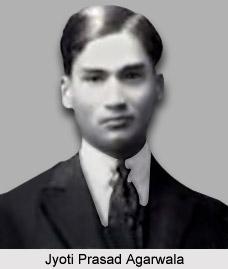 Assamese Drama in the Jayanti era is essentially divided into three broad categories: mythological, the historical, and the social. The structure of drama saw a major change in that it moved away from the rigidity of the classical five-act form. This flexibility allowed the later introduction of the one-act play. One of the major factors in the development of drama during this era was the radio. The ability to perform and broadcast a play without any visuals or costumes on radio shows freed drama from mere stage effects. The message and dialogue became important and thus more efficient. The influence of Shaw and Ibsen`s message-oriented drama can be seen in the social drama of this period.
Assamese Drama in the Jayanti era is essentially divided into three broad categories: mythological, the historical, and the social. The structure of drama saw a major change in that it moved away from the rigidity of the classical five-act form. This flexibility allowed the later introduction of the one-act play. One of the major factors in the development of drama during this era was the radio. The ability to perform and broadcast a play without any visuals or costumes on radio shows freed drama from mere stage effects. The message and dialogue became important and thus more efficient. The influence of Shaw and Ibsen`s message-oriented drama can be seen in the social drama of this period.
The historical dramas dealt with famous Assamese figures of recent history as their subjects. There was a particular emphasis on figures who symbolized resistance to British rule. The Nagaon Natya Samiti`s Piyoli Phookan (1948), Prabin Phookan`s (1912-85) Lachit Bor phookan (1946) and Maniram Dewan (1948), and Surendranath Saikia`s Kushal Konwar (1949) dramatized the historical and personal events surrounding these well-known personalities of Assam`s history. Surendranath Saikia also wrote a number of mythological plays, such as Kama (1947) and Lakshman (1949). But such plays were fewer in number. It was the social drama that gained popularity and importance, and Jyoti Prasad Agarwala being the dramatist popularized this drama. In his Lobhita (1942), though the play is set within two political events, World War II and the 1942 independence movement, the social message is most relevant. Its heroine, Lobhita`s, reaction to events around her, her courage and determination amid intense struggles, her ultimate sacrifice characterize a pride and essence of patriotism that allowed this young Assamese woman to face modern problems unafraid. Agarwala`s message thrived in inspiring young Assamese men and women worthy enough to encounter the complexities of the modern world with self- confidence and pride in their heritage and reject earlier tendencies to marginalize themselves. His Karengor Ligiri (The Palace Maid, 1936), too, dramatizes the dehumanizing effects of traditional class structures. Among his other plays are the symbolic dramas Nimati Kanya, Rupalim, and Sonit Kunwori. They are all notable for experimenting not only with form but with technique, including the incorporation of songs and music in what can be termed poetic dramas. Other social dramas of this period are Satya Prasad Barua`s (1919) Sakoi Sokuwat (1940), Susibrata Raichoudhuri`s Kon Bate (1948), and Dandiram Kalita`s Po-rasit (1946). We do find a number of comedies written during this period, but the comic vision was not predominant in the 1940s.
Thus it can be seen that Assamese drama in the Jayanti period developed a certain refinement in terms of dialogue, message and content.



















